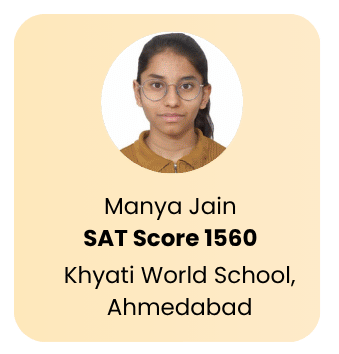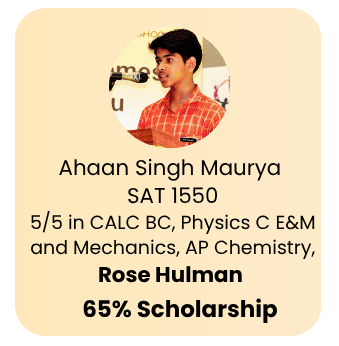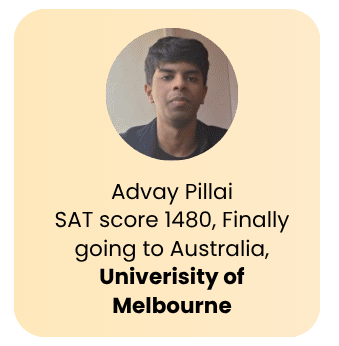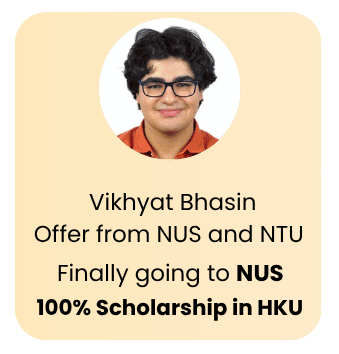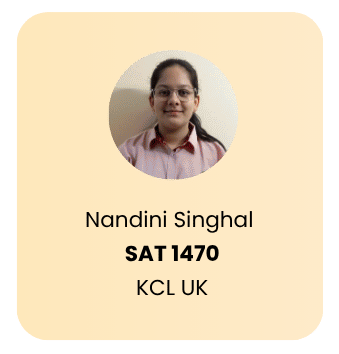Rajesh Patel received the email at 2:47 AM. His son Arjun, despite scoring 1520 on the SAT and maintaining a 95% average, had been rejected by all eight universities they applied to. The family had invested ₹6.2 lakhs in international university admissions preparation – test coaching, consultant fees, application costs – only to discover that a single strategic mistake had made their applications uncompetitive from day one.
This devastating scenario repeats itself in thousands of Indian households every year. Families invest enormous sums in overseas education guidance, believing that high test scores and good grades guarantee admission success. What they don’t realize is that seemingly small mistakes in the admissions process can completely derail their chances, turning years of preparation and lakhs of investment into expensive lessons in what not to do.
After analyzing admission outcomes for over 800 Indian students who applied to international universities between 2020-2024, we’ve identified ten critical mistakes that consistently cost families ₹15-25 lakhs each. These aren’t minor oversights – they’re systematic errors that destroy admission chances while creating massive financial and emotional costs.
The most shocking discovery? Nearly 70% of these costly mistakes are completely preventable with proper guidance and strategic planning. The families who avoid these pitfalls don’t just save money – they dramatically increase their children’s chances of admission to prestigious international education institutions.
Understanding these mistakes isn’t just about avoiding disaster – it’s about positioning your family among the 30% who achieve their international education dreams while others struggle with rejection and financial loss.
Mistake #1: The “Prestige-Only” University Selection Disaster
The Mistake: Applying exclusively to highly prestigious universities without strategic balance, ignoring admission probability and fit factors.
How This Mistake Unfolds
Priya Sharma from Delhi had everything going for her – 1540 SAT, 96% in Class 12, strong extracurricular activities. Her family, guided by a study abroad consultant who emphasized prestige above strategy, applied to 12 universities: all Ivy League schools, Stanford, MIT, and other top-10 US institutions.
The Devastating Result:
- 12 rejections across all applications
- ₹4.8 lakhs spent on applications, test prep, and consultant fees
- No backup options or safety schools
- Forced gap year and complete reapplication process
- Additional ₹3.2 lakhs for second-round preparation
- Total Cost: ₹8 lakhs plus lost opportunity costs
Why This Mistake Is So Expensive
Application Fee Multiplication:
- Premium university application fees: ₹6,000-₹12,000 each
- Test score reporting: ₹2,000-₹4,000 per university
- Document authentication and courier: ₹1,500-₹3,000 per application
- Total per application: ₹9,500-₹19,000
Consultant and Preparation Costs:
- High-end consultant fees for “guaranteed Ivy League prep”: ₹4-8 lakhs
- Premium test preparation targeting perfect scores: ₹1.5-3 lakhs
- Essay editing and application optimization: ₹50,000-₹1.5 lakhs
Opportunity Costs:
- Gap year living expenses and lost earning potential: ₹3-5 lakhs
- Reapplication costs for following year: ₹2-4 lakhs
- Delayed career start impacting lifetime earnings: ₹10-25 lakhs
The Strategic Alternative That Works
Balanced Portfolio Approach:
- Reach Schools (20-30%): 2-3 highly competitive universities where admission is unlikely but possible
- Match Schools (40-50%): 4-6 universities where student profile aligns with average admitted students
- Safety Schools (20-30%): 2-4 universities where admission is highly probable with potential scholarships
Real Success Example: Arjun Kumar from Gurgaon used this balanced approach:
- Applied to 10 universities across all categories
- Accepted to 6 universities including 2 reach schools
- Received ₹8 lakhs scholarship at his chosen university
- Total investment: ₹2.8 lakhs, Return: ₹8 lakhs scholarship
How to Avoid This Mistake
Research-Based Selection:
- Analyze admission statistics for students with similar profiles
- Consider program fit, not just university rankings
- Include universities that offer merit scholarships for your profile
- Research cultural fit and support systems for international students
Professional Guidance:
- Work with international student advisors who emphasize strategic balance
- Avoid consultants who guarantee admission to specific prestigious universities
- Seek second opinions on university lists from multiple sources
- Use data-driven selection rather than emotion-based choices .
Mistake #2: The Late-Start Application Scramble
The Mistake: Beginning the university application process too late, leading to rushed preparation and suboptimal outcomes.
The Timeline Disaster Pattern
Meera Gupta’s daughter Ananya decided to study abroad in October of her Class 12 year. With US application deadlines in January, the family had just three months to complete:
- SAT preparation and testing
- University research and selection
- Essay writing and application development
- Recommendation letter coordination
- Financial aid applications
The Crushing Reality:
- Insufficient time for meaningful SAT improvement (scored 1320 instead of potential 1450+)
- Rushed university research led to poor fit selections
- Generic essays written under extreme time pressure
- Missed scholarship deadlines worth ₹5-15 lakhs
- Accepted only to backup universities with no financial aid
- Additional cost of late start: ₹12-18 lakhs over four years
Why Late Starts Are So Expensive
Suboptimal Test Performance: Quality test preparation requires 6-12 months for significant improvement. Late starters typically:
- Score 100-200 points below their potential on SAT/ACT
- Miss opportunities for multiple test attempts
- Pay premium fees for crash courses with limited effectiveness
- Settle for scores that eliminate merit scholarship opportunities
Rushed Application Quality:
- Generic essays that fail to differentiate students
- Poor university selection based on limited research
- Missed opportunities for profile enhancement
- Inadequate time for application optimization and review
Scholarship Deadline Misses: Many significant scholarships have deadlines 6-12 months before university applications:
- Merit scholarships: Often due by December for following year admission
- External scholarships: Many due by January-March for fall admission
- University-specific awards: Early application requirements for consideration
The Optimal Timeline That Saves Money
18-Month Preparation Schedule:
- Months 18-15: Initial assessment, goal setting, and strategy development
- Months 14-10: Intensive test preparation and profile building
- Months 9-6: University research, essay development, and application preparation
- Months 5-1: Application submission, interview preparation, and decision making
- Month 0: Visa processing and pre-departure preparation
Early Start Success Story: Rohit Jain from Mumbai began preparation in Class 10:
- 18 months of strategic test prep: 1480 SAT score
- Meaningful extracurricular development and leadership roles
- Comprehensive university research and strategic applications
- Early scholarship applications: ₹18 lakhs in merit awards
- Net cost of education: ₹8 lakhs instead of ₹26 lakhs
How to Avoid Late-Start Disasters
Begin Early Assessment:
- Start exploring international education options in Class 10
- Conduct initial profile assessment by Class 11
- Begin test preparation 12-18 months before applications
- Research universities and requirements well in advance
Create Strategic Timelines:
- Work backwards from application deadlines to create comprehensive schedules
- Build buffer time for unexpected delays or opportunities
- Coordinate multiple deadlines to avoid overwhelming periods
- Plan for multiple test attempts and score improvements
Mistake #3: The Test Score Obsession Trap
The Mistake: Focusing exclusively on achieving perfect test scores while neglecting other crucial application components.
How Test Score Obsession Backfires
Vikram Singh achieved his goal of a perfect 1600 SAT score after three attempts and 18 months of intensive preparation. His family invested ₹3.2 lakhs in premium test coaching, believing that perfect scores guaranteed admission to top universities.
The Shocking Result:
- Rejected by 7 out of 8 target universities despite perfect test scores
- Weak extracurricular profile due to excessive test prep focus
- Generic essays with no compelling personal narrative
- No leadership experience or meaningful community involvement
- Missed scholarship opportunities requiring holistic profiles
- Wasted investment: ₹3.2 lakhs in test prep with minimal return
Why Perfect Scores Don’t Guarantee Admission
Holistic Admission Reality: Top universities use holistic evaluation considering:
- Academic performance (grades and test scores): 30-40% weight
- Extracurricular activities and leadership: 25-35% weight
- Essays and personal narrative: 20-30% weight
- Recommendation letters: 10-15% weight
- Unique experiences and perspectives: 10-20% weight
Score Threshold vs. Differentiation:
- Competitive universities have score thresholds (typically 1450+ SAT)
- Above threshold, higher scores provide diminishing returns
- Differentiation comes from non-academic factors
- Perfect scores are common among rejected applicants
Real Admission Data: Harvard’s 2023 admission statistics:
- 50% of rejected applicants had SAT scores above 1500
- 25% of rejected applicants had perfect or near-perfect scores
- Accepted students showed exceptional non-academic achievements
- Test scores were necessary but not sufficient for admission
The Balanced Approach That Works
Strategic Score Targeting:
- Identify score thresholds for target universities (usually 1450-1500 SAT)
- Achieve competitive scores efficiently without perfectionism
- Redirect excess test prep time to profile building
- Focus on meaningful activities that demonstrate passion and impact
Profile Development Investment: Instead of pursuing perfect scores, successful students invest in:
- Research projects with university professors or local organizations
- Leadership roles in meaningful extracurricular activities
- Community service projects with measurable impact
- Internships or work experiences related to career interests
- Creative pursuits or unique talents that showcase personality
Success Story: Kavya Patel scored 1460 SAT (good but not perfect) and invested saved time in:
- Leading a community environmental project affecting 500+ families
- Conducting research on water purification published in local journal
- Starting a tutoring program for underprivileged children
- Result: Accepted to 5 top universities with ₹12 lakhs scholarship
How to Avoid Test Score Obsession
Set Realistic Score Targets:
- Research score ranges for target universities
- Aim for 75th percentile scores, not perfection
- Plan maximum 2-3 test attempts
- Redirect time saved to meaningful activities
Balanced Preparation Strategy:
- Allocate 40% of preparation time to test prep
- Invest 60% in extracurricular development and profile building
- Focus on activities that align with career interests
- Develop compelling personal narratives through experiences
Mistake #4: The Generic Essay and Application Disaster
The Mistake: Submitting generic, template-based essays and applications that fail to differentiate students from thousands of similar applicants.
The Template Trap That Destroys Chances
Rahul Mehta’s family hired a study abroad consultant who provided “proven essay templates” used by previous successful students. Rahul’s personal statement followed the classic “overcoming adversity” template, his supplemental essays used generic “why this university” formats, and his activity descriptions were lifted from consultant databases.
The Predictable Outcome:
- Admission officers immediately recognized template language
- Applications lacked authentic voice and genuine personality
- No differentiation from hundreds of similar applications
- Rejected by all target universities despite strong academic credentials
- Wasted investment: ₹2.8 lakhs in consultant fees plus application costs
Why Generic Applications Are Admission Killers
Admission Officer Perspective: University admission officers read thousands of applications and can identify generic content within seconds:
- Template essays use predictable themes and language patterns
- Generic activities lack specific details and measurable impact
- Cookie-cutter applications suggest lack of genuine interest
- Recycled content appears inauthentic and calculated
The Volume Problem: Top universities receive applications from:
- 40,000+ applicants for 2,000 spots (Harvard, Stanford)
- 80% of applicants have similar academic credentials
- Generic applications blend together and are quickly eliminated
- Only authentic, unique narratives capture attention and interest
Authenticity Detection: Modern admission processes include:
- Multiple readers comparing applications for consistency
- Plagiarism detection software for essay content
- Cross-referencing with previous years’ applications
- Interview verification of application claims
The Authentic Application Strategy That Works
Personal Story Development: Successful applications showcase genuine experiences and perspectives:
- Specific challenges overcome with concrete examples
- Unique cultural, family, or personal background elements
- Genuine passions demonstrated through sustained involvement
- Personal growth narratives with measurable outcomes
University-Specific Customization: Each application should demonstrate:
- Specific knowledge of university programs and culture
- Clear connection between student goals and university offerings
- Understanding of how the student will contribute to campus community
- Genuine enthusiasm for specific professors, research, or opportunities
Compelling Activity Descriptions: Instead of generic lists, effective applications include:
- Quantified impact and measurable outcomes
- Leadership progression and increasing responsibility
- Problem-solving examples with specific solutions
- Connection between activities and future goals
Success Example: Priya Jain wrote about her experience creating a mobile app to help her grandmother with diabetes management:
- Specific technical challenges and solutions
- Measurable impact on family and community health
- Connection to computer science career goals
- Demonstration of empathy, innovation, and technical skills
- Result: Accepted to MIT with significant scholarship
How to Avoid Generic Application Disasters
Authentic Story Mining:
- Conduct deep reflection on unique experiences and perspectives
- Identify specific moments of growth, challenge, or discovery
- Focus on genuine interests rather than what “looks good”
- Develop narratives that only your child could tell
Professional Guidance vs. Template Avoidance:
- Work with consultants who emphasize authenticity over templates
- Avoid any consultant offering “guaranteed successful essays”
- Seek guidance that helps develop your child’s unique voice
- Verify that essay assistance maintains authentic student expression
Multiple Review Cycles:
- Plan 3-4 revision cycles for all application components
- Seek feedback from multiple sources (teachers, mentors, family)
- Read applications aloud to identify awkward or generic language
- Ensure consistency between essays, activities, and overall narrative .
Mistake #5: The Financial Aid and Scholarship Neglect
The Mistake: Failing to research, apply for, or optimize financial aid and scholarship opportunities, resulting in massive unnecessary education costs.
The ₹15 Lakh Oversight
Suresh Agarwal’s family focused entirely on gaining admission to US universities, assuming they would figure out funding after acceptance. They missed critical scholarship deadlines, failed to understand need-based aid requirements, and submitted incomplete financial aid applications.
The Expensive Consequences:
- Missed merit scholarship deadlines worth ₹8-20 lakhs per year
- Incomplete FAFSA and CSS Profile applications eliminated need-based aid eligibility
- No research into university-specific scholarship opportunities
- Paid full tuition (₹25 lakhs/year) instead of potential net cost (₹10 lakhs/year)
- Four-year additional cost: ₹60 lakhs in missed opportunities
Why Scholarship Neglect Is So Costly
Merit Scholarship Landscape:
- Top US universities offer merit scholarships ranging from ₹5-40 lakhs annually
- Many scholarships have separate applications with earlier deadlines
- International students are eligible for numerous university-specific awards
- External scholarships specifically target Indian students studying abroad
Need-Based Aid Opportunities:
- Many universities offer need-based aid to international students
- Aid calculations consider family income, assets, and circumstances
- Proper application can reduce costs by ₹10-30 lakhs annually
- Some universities are need-blind for international admissions
Hidden Scholarship Sources:
- Corporate scholarships from Indian and international companies
- Foundation grants for specific fields or demographics
- Government scholarships from destination countries
- Alumni association awards for outstanding students
The Strategic Scholarship Approach
Early Scholarship Research: Begin scholarship research 12-18 months before applications:
- University-specific merit awards and requirements
- External scholarship databases and eligibility criteria
- Corporate and foundation opportunities
- Government and embassy scholarship programs
Application Timeline Optimization:
- Create scholarship calendar with all deadlines
- Priority ranking based on award amounts and eligibility fit
- Early application submission for competitive awards
- Follow-up and interview preparation for finalist selections
Financial Aid Maximization:
- Complete FAFSA and CSS Profile accurately and early
- Understand need-based aid calculation and optimization strategies
- Research universities with generous international student aid
- Plan family financial positioning for aid eligibility
Success Story: Ananya Reddy from Hyderabad secured ₹22 lakhs in annual scholarships through:
- Early merit scholarship applications to 15 universities
- External scholarship applications to 8 organizations
- Optimized need-based aid applications
- Strategic university selection based on aid generosity
- Total four-year savings: ₹88 lakhs
How to Avoid Scholarship Neglect
Comprehensive Scholarship Strategy:
- Begin research 18+ months before university applications
- Create detailed spreadsheet tracking opportunities, requirements, and deadlines
- Apply to 15-25 scholarships for maximum opportunities
- Customize applications for each scholarship’s specific criteria
Professional Scholarship Assistance:
- Work with education consultancy services that specialize in scholarship identification
- Avoid consultants who don’t emphasize financial aid opportunities
- Consider scholarship-specific consultants for high-value opportunities
- Verify consultant track record in securing student funding
Mistake #6: The Recommendation Letter Coordination Failure
The Mistake: Poor planning and coordination of recommendation letters, resulting in weak endorsements or missed deadlines that destroy application chances.
The Last-Minute Letter Disaster
Kiran Joshi asked his teachers for recommendation letters just six weeks before application deadlines. The rushed timeline meant:
- Teachers had insufficient time to write thoughtful, detailed letters
- Generic recommendations that could apply to any student
- One teacher missed the deadline entirely, making applications incomplete
- No opportunity to provide teachers with context about goals and achievements
- Result: Weak recommendations contributed to rejections at all target universities
The Hidden Costs:
- Wasted application fees for incomplete applications: ₹1.2 lakhs
- Reapplication costs for following year: ₹3.5 lakhs
- Gap year opportunity costs: ₹4-6 lakhs
- Total impact: ₹8.7-10.7 lakhs
Why Recommendation Letters Are Critical
Admission Weight:
- Recommendation letters account for 10-20% of admission decisions
- Provide third-party validation of student achievements and character
- Offer insights into student potential that grades and test scores cannot capture
- Differentiate students with similar academic credentials
Teacher Perspective Importance: Strong recommendations include:
- Specific examples of student performance and growth
- Comparison to other students in teacher’s experience
- Evidence of intellectual curiosity and academic potential
- Character traits and personal qualities relevant to university success
Common Recommendation Failures:
- Generic letters that could apply to any student
- Focus on grades rather than student potential and character
- Lack of specific examples or memorable anecdotes
- Teachers who don’t know the student well enough to provide meaningful insights
The Strategic Recommendation Approach
Early Relationship Building: Begin building teacher relationships 12-18 months before applications:
- Participate actively in classes and demonstrate genuine interest
- Seek additional help or engage in academic discussions beyond requirements
- Volunteer for class projects or assist with school activities
- Maintain contact with teachers even after completing their courses
Strategic Teacher Selection: Choose recommenders based on:
- Subject relevance to intended college major
- Depth of relationship and knowledge of student abilities
- Teaching reputation and experience with college recommendations
- Ability to provide specific examples of student achievement and growth
Recommendation Coordination Process:
- Request recommendations 4-6 months before deadlines
- Provide teachers with comprehensive information packet including:
- Resume highlighting achievements and activities
- Personal statement draft explaining goals and motivations
- Specific examples of classroom performance or projects
- List of target universities and programs
- Schedule follow-up meetings to discuss student goals and provide additional context
- Send reminder emails with deadline information and submission instructions
Success Example: Arjun Patel built strong relationships with three teachers over two years:
- Math teacher: Highlighted analytical thinking and problem-solving abilities
- English teacher: Emphasized communication skills and intellectual curiosity
- Science teacher: Described research potential and laboratory leadership
- Result: Powerful recommendations contributed to acceptances at 7 universities
How to Avoid Recommendation Letter Failures
Timeline Planning:
- Identify potential recommenders 18+ months before applications
- Build meaningful relationships through sustained engagement
- Request letters 4-6 months before deadlines
- Provide comprehensive support materials and context
Quality Assurance:
- Choose teachers who know you well and can provide specific examples
- Avoid recommendations from family friends or employers unless specifically required
- Ensure recommenders understand university expectations and requirements
- Follow up appropriately without being pushy or demanding .
Mistake #7: The Cultural Fit and University Research Failure
The Mistake: Selecting universities based solely on rankings without researching cultural fit, academic environment, and student support systems.
The Mismatched University Disaster
Pooja Sharma gained admission to a prestigious US university ranked in the top 20. However, inadequate research meant she was unprepared for:
- Highly competitive, cutthroat academic environment unsuited to her collaborative learning style
- Limited support for international students in a small college town
- Academic programs that didn’t align with her career interests
- Cultural environment that made adaptation extremely difficult
The Expensive Consequences:
- Poor academic performance due to environmental mismatch
- Mental health challenges requiring counseling and support
- Transfer application costs and lost credits: ₹3-5 lakhs
- Extended graduation timeline adding extra year costs: ₹15-20 lakhs
- Total additional costs: ₹18-25 lakhs plus emotional trauma
Why Cultural Fit Research Is Critical
Academic Environment Variations: Universities differ significantly in:
- Competitive vs. collaborative learning cultures
- Research opportunities and faculty accessibility
- Class sizes and student-professor interaction levels
- Academic support systems and tutoring availability
International Student Support: Critical factors often overlooked:
- International student office quality and services
- Cultural adaptation programs and resources
- Indian student community size and support networks
- Local community acceptance and diversity
Location and Lifestyle Factors:
- Climate and weather adaptation challenges
- Urban vs. rural environment preferences
- Transportation and accessibility considerations
- Cost of living variations and budget impact
The Comprehensive Research Strategy
Multi-Source Information Gathering:
- Official university websites and program descriptions
- Student review platforms and honest feedback
- Social media groups and current student interactions
- Alumni networks and career outcome data
- Campus visit opportunities (virtual or in-person)
Cultural Fit Assessment:
- Learning style compatibility with university environment
- Social and extracurricular opportunity alignment
- Support system availability for international students
- Community diversity and inclusion indicators
Academic Program Deep Dive:
- Curriculum structure and flexibility
- Faculty research interests and accessibility
- Internship and co-op opportunities
- Graduate school placement and career outcomes
Success Story: Rahul Kumar chose a mid-ranked university over prestigious options because research revealed:
- Strong engineering co-op program with 95% job placement
- Large Indian student community and cultural support
- Collaborative academic environment matching his learning style
- Excellent faculty mentorship and research opportunities
- Result: Successful graduation with job offer and ₹8 lakhs higher starting salary than prestigious university graduates
How to Avoid Cultural Fit Failures
Comprehensive Research Process:
- Spend 20+ hours researching each target university
- Connect with current students and recent alumni
- Attend virtual information sessions and campus tours
- Research local community and cultural factors
Priority-Based Selection:
- Define personal priorities: academic fit, social environment, career outcomes
- Weight factors based on individual student needs and preferences
- Consider long-term goals and career alignment
- Balance prestige with practical fit considerations
Mistake #8: The Visa Application and Documentation Disaster
The Mistake: Poor visa application preparation and documentation leading to rejections, delays, or additional costs that can exceed ₹5 lakhs.
The Visa Rejection Nightmare
After gaining admission to his dream university, Amit Gupta’s visa application was rejected due to:
- Incomplete financial documentation failing to demonstrate adequate funding
- Inconsistencies between university application and visa application information
- Poor interview preparation leading to unconvincing responses about study intentions
- Missing required documents discovered only during visa appointment
The Devastating Costs:
- Lost university admission due to delayed visa processing
- Reapplication fees and process restart: ₹2-3 lakhs
- Gap year living costs and opportunity loss: ₹4-6 lakhs
- Emotional trauma and family stress
- Total impact: ₹6-9 lakhs plus delayed career start
Why Visa Preparation Is Critical
Rejection Rate Reality:
- US student visa rejection rates for Indians: 15-25%
- UK student visa rejection rates: 8-15%
- Common rejection reasons: inadequate financial documentation, unclear study intentions, incomplete applications
Documentation Complexity: Student visa applications require:
- Comprehensive financial documentation proving funding sources
- Academic transcripts and certificates with proper authentication
- Medical examinations and health clearances
- Police clearance certificates and background checks
- University admission documentation and I-20/CAS forms
Interview Preparation Importance: Visa interviews assess:
- Genuine study intentions vs. immigration motivations
- Understanding of chosen program and career goals
- Financial capability and funding source legitimacy
- Ties to home country and return intentions
The Strategic Visa Preparation Approach
Early Documentation Planning: Begin visa preparation immediately after university admission:
- Gather all required documents with proper authentication
- Prepare comprehensive financial documentation showing funding sources
- Organize academic transcripts and certificates with official translations
- Complete medical examinations and health clearances
Professional Interview Preparation:
- Practice with experienced visa consultants or counselors
- Prepare consistent, honest responses about study plans and career goals
- Understand program details and university information thoroughly
- Practice explaining financial arrangements and funding sources clearly
Timeline Management:
- Apply for visa appointments immediately after receiving university admission
- Allow 2-3 months for visa processing and potential delays
- Plan for multiple appointment availability in case of initial rejection
- Coordinate visa timing with university enrollment deadlines
Success Story: Kavya Patel’s systematic visa preparation included:
- Complete documentation prepared 2 months before application
- Professional interview coaching with mock sessions
- Comprehensive financial documentation with clear funding explanations
- Result: Visa approved on first attempt with no delays or additional costs
How to Avoid Visa Disasters
Professional Visa Assistance:
- Work with experienced student visa consultants who specialize in your target country
- Avoid general consultants who don’t have specific visa expertise
- Verify consultant track record with recent visa success rates
- Understand all requirements and prepare documentation systematically
Documentation Excellence:
- Prepare all documents with proper authentication and translations
- Ensure consistency across all application materials
- Maintain organized file systems for easy access and reference
- Plan for document updates and renewals as needed
Mistake #9: The Profile Building Procrastination Problem
The Mistake: Delaying meaningful extracurricular involvement and profile building until too late to demonstrate genuine impact and leadership.
The Last-Minute Activity Rush
Neha Agarwal realized in Class 12 that her profile lacked meaningful extracurricular activities. She frantically joined multiple clubs, started volunteer work, and attempted to create leadership experiences in her final year.
The Predictable Failure:
- Activities appeared superficial and resume-padding to admission officers
- No time to develop meaningful impact or measurable outcomes
- Leadership roles were clearly recent and lacked depth
- Essays couldn’t authentically describe long-term commitment or growth
- Result: Rejections from target universities despite strong academics
The Opportunity Costs:
- Missed scholarship opportunities requiring demonstrated leadership: ₹5-15 lakhs
- Acceptance only to lower-tier universities with limited career prospects
- Reduced lifetime earning potential: ₹10-25 lakhs
- Total impact: ₹15-40 lakhs in lost opportunities
Why Early Profile Building Is Essential
Authenticity Requirements: Universities seek evidence of:
- Sustained commitment over multiple years
- Progressive leadership development and increasing responsibility
- Measurable impact and meaningful outcomes
- Genuine passion demonstrated through consistent involvement
Development Timeline Reality: Meaningful profile building requires:
- 2-3 years to develop significant leadership roles
- 18+ months to create measurable community impact
- Multiple years to build expertise in specific areas
- Time for reflection and growth that creates compelling narratives
Competitive Landscape: Successful applicants typically show:
- 3-4 major activities with deep involvement
- Leadership progression from participant to leader
- Community impact with quantifiable outcomes
- Unique experiences that differentiate them from other applicants
The Strategic Profile Building Approach
Early Activity Selection: Begin meaningful involvement in Class 9-10:
- Choose 3-4 activities aligned with genuine interests
- Focus on depth rather than breadth of involvement
- Seek progressive leadership opportunities within chosen activities
- Plan for long-term impact and measurable outcomes
Leadership Development:
- Start as active participant and volunteer for additional responsibilities
- Propose new initiatives or improvements to existing programs
- Document achievements and impact with specific metrics
- Seek mentorship from adult leaders in chosen areas
Impact Creation:
- Identify community problems that align with personal interests
- Develop solutions and implement programs with measurable outcomes
- Document progress and results with photos, testimonials, and data
- Scale successful initiatives to reach broader audiences
Success Story: Arjun Mehta began environmental activism in Class 9:
- Year 1: Participated in school environmental club
- Year 2: Led campus recycling initiative reducing waste by 40%
- Year 3: Founded community composting program serving 200+ families
- Year 4: Received state environmental award and university scholarship
- Result: ₹12 lakhs scholarship based on demonstrated environmental leadership
How to Avoid Profile Building Procrastination
Early Planning:
- Begin activity exploration in Class 9-10
- Identify interests and potential leadership areas
- Plan 3-4 year development timeline for chosen activities
- Set annual goals for increasing involvement and impact
Meaningful Engagement:
- Choose activities based on genuine interests, not resume appeal
- Commit to sustained involvement rather than activity hopping
- Seek increasing responsibility and leadership opportunities
- Document achievements and impact throughout involvement
Mistake #10: The Family Communication and Support System Breakdown
The Mistake: Poor family communication, unrealistic expectations, and inadequate support systems leading to stress, conflict, and suboptimal outcomes.
The Family Pressure Disaster
The Gupta family’s international education journey became a nightmare of conflict and stress:
- Parents had unrealistic expectations about guaranteed Ivy League admission
- Student felt overwhelming pressure and developed anxiety affecting performance
- Family disagreements about university choices created constant tension
- Financial stress due to inadequate planning strained family relationships
- Poor communication led to missed deadlines and coordination failures
The Hidden Costs:
- Student therapy and counseling costs: ₹1-2 lakhs
- Suboptimal performance due to stress affecting test scores and applications
- Family relationship damage requiring ongoing repair
- Missed opportunities due to poor coordination and communication
- Total impact: ₹5-10 lakhs plus immeasurable family stress
Why Family Support Systems Are Critical
Stress Management Importance: The international admission process creates:
- High-pressure environment with multiple deadlines and requirements
- Financial stress from significant investment in uncertain outcomes
- Emotional challenges from competition and potential rejection
- Cultural adaptation anxiety about studying abroad
Coordination Requirements: Successful applications require:
- Coordinated timeline management across multiple family members
- Financial planning and resource allocation decisions
- Strategic decision-making about universities, consultants, and approaches
- Emotional support during challenging periods and setbacks
Expectation Management: Realistic family expectations include:
- Understanding that admission is competitive regardless of qualifications
- Accepting that perfect scores don’t guarantee admission to top universities
- Recognizing that the process requires sustained effort over 18+ months
- Acknowledging that backup plans and alternatives are essential
The Strategic Family Support Approach
Communication Protocol Establishment:
- Regular family meetings to discuss progress, challenges, and decisions
- Clear role definition for parents, students, and other family members
- Open discussion about fears, expectations, and concerns
- Professional mediation when family conflicts arise
Realistic Expectation Setting:
- Research-based understanding of admission probabilities and requirements
- Multiple scenario planning including backup options and alternatives
- Financial planning with contingencies for different outcomes
- Celebration of achievements regardless of final admission outcomes
Stress Management Systems:
- Professional counseling support when needed
- Balanced lifestyle maintaining social activities and relaxation
- Physical health maintenance through exercise and proper nutrition
- Emotional support networks beyond immediate family
Success Story: The Patel family established strong support systems:
- Weekly family meetings with structured agenda and progress review
- Professional counseling support during high-stress periods
- Realistic expectation setting with multiple backup plans
- Celebration of milestones and achievements throughout process
- Result: Successful admission outcomes with maintained family relationships and student well-being
How to Avoid Family Support System Breakdown
Proactive Communication:
- Establish regular family meetings and communication protocols
- Discuss expectations, fears, and concerns openly and honestly
- Seek professional family counseling when conflicts arise
- Maintain perspective about long-term family relationships vs. short-term admission stress
Realistic Planning:
- Set achievable goals based on research and professional guidance
- Plan for multiple scenarios including backup options
- Maintain balanced perspective about admission outcomes and life success.



